Can you see the dead?
One time a year, the departed return to celebrate with us. Don’t worry, it’s nothing spooky. We’re referring to Día de los Muertos, or the Day of the Dead.
Unfolding Día de los Muertos: Reuniting Living and Dead
This Mexican two-day holiday is when families recall and honour deceased loved ones, believing their spirits return to be with the living. It’s a dynamic celebration fusing indigenous traditions and Catholicism.
You might notice the skeleton face paintings and offerings prepared by those celebrating. Let’s dive in and unfold this unique holiday.
When does the dead return?
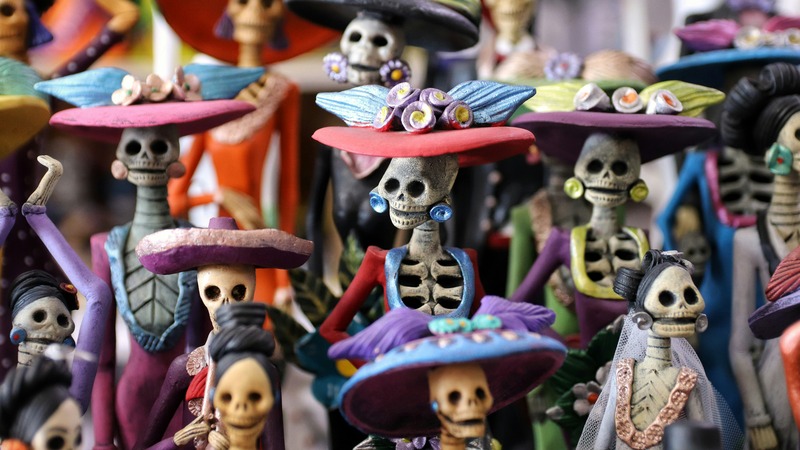
The holiday is celebrated on the 1st and 2nd of November, coinciding with the Catholic observance of All Saints’ Day and All Souls’ Day. The first day is dedicated to honouring deceased children, while the second focuses on adults.
Día de los Angelitos (Day of the Little Angels) begins at midnight on 1st November when the spirits of deceased children are thought to reunite with their families for 24 hours. Families create an ofrenda, featuring the child’s favourite snacks, candies, toys, and photos to invite their children home.
The festivities transition to more laughter and fond recollections, but this time for the adults. At midnight of 2nd November, the ofrendas cherishing Día de los Difuntos adopt a more adult theme, featuring tequila, pan de muerto, mezcal, pulque, and jars of atole. Families come together to play games, share stories about their loved ones, and dance to music.
While Día de los Muertos originated in Mexico, Día de los Muertos is celebrated in many Latin American countries and among communities worldwide, particularly in the United States, where many Mexican traditions are observed.
What happens during Día de los Muertos?
This auspicious holiday holds deep cultural and spiritual significance. Thus, a vivid and heartfelt experience is floating in the air (so not just the dead) all in the name of celebrating life and honouring death. Día de los Muertos’ traditions foster a sense of continuity between the living and the dead - death is not something to fear yet it is a natural part of life in this realm.
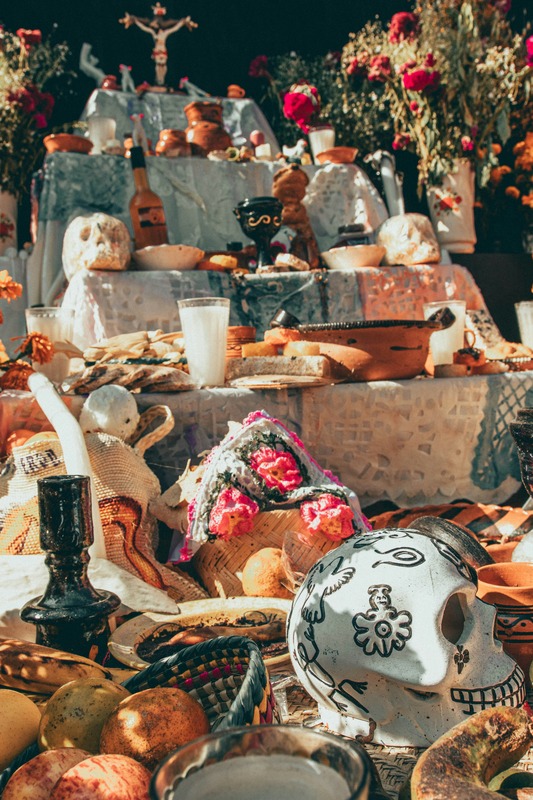
Despite skulls and skeletons being the most recognisable symbols of Día de los Muertos, the ofrenda (altar) weighs the most substance. These ofrendas in homes and/or at cemeteries are believed to attract the departed souls from the land of the dead as they hear prayers, smell food, and join in the festivities.
This is the centrepiece of the celebration and consists of offerings dedicated to the individual being honoured. A brightly coloured oilcloth covers the altar, which displays a collection of photographs and personal items of the deceased. The lower section of the altar holds offerings, ranging from traditional Mexican dishes to other items that reflect the tastes of the cherished person.
Día de los Muertos is indeed unlike any other holiday where mourning is exchanged for celebration. It’s a joyous occasion that celebrates life as well as death.
This auspicious holiday is abundant in traditions and customs that vary by region but generally, those celebrating would prepare the following:
Calaveras (skulls) - Skulls are handmade from sugar (known as alfeñiques) or clay and then intricately embellished; depicted with smiles to mock death itself. They come in various forms, such as sugar candies, clay decorations, and notably, face paint.
Flor de Muerto (marigold flowers) - Marigolds are thought to serve as pathways that guide spirits to their ofrendas and embody the beauty and fragility of life. These bright orange flowers have a hue and fragrance that attract the souls of the departed, allowing them to enjoy their favourite foods.
Pan de Muerto (bread of the dead) - This traditional sweet bread, often shaped like bones, is a staple of the celebration. It’s placed on the altar as an offering and shared among family members.
Visiting graves - It's customary to clean the gravestone and refresh its appearance. Many families visit cemeteries to clean and decorate the graves of their loved ones, often spending the night there to celebrate and share stories.
Refreshments - Families prepare favourite dishes of the departed, including traditional foods, drinks, and sometimes even the deceased’s favourite snacks as an act of collective remembrance.
La Catrina - This iconic figure depicted as a stylishly dressed skeleton serves as a symbol of death in a humorous and celebratory way, reminding people that death is a part of life.
Music and dance - Celebrations often include traditional music and dancing, reflecting joy and festivity. Mariachi bands or folkloric dance performances can be part of the festivities.
Parades and community celebrations - In many cities, public celebrations feature parades, decorated floats, and community gatherings, bringing together people to celebrate and honour the tradition collectively. This communal aspect strengthens family bonds and cultural identity.
Do other cultures celebrate Día de los Muertos?
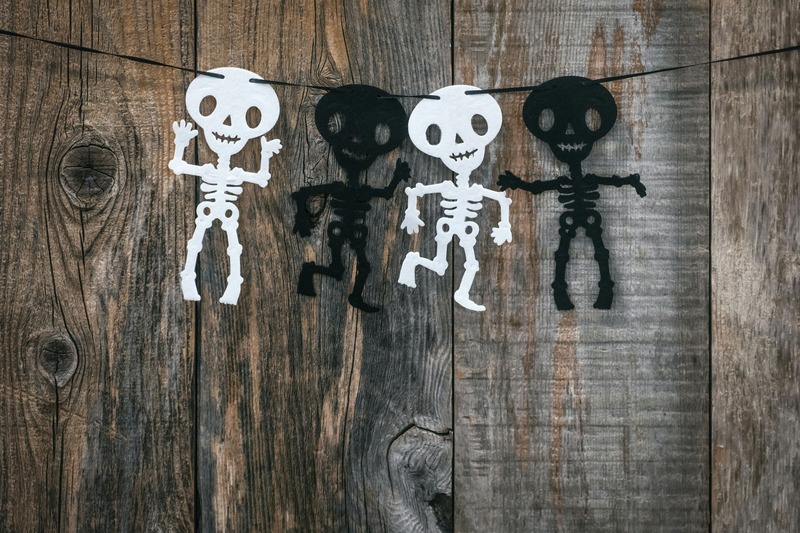
Yes! Several cultures around the world have similar celebrations that honour deceased loved ones by highlighting the universal human experience of grief and remembrance.
Let’s take a look at the list below.
Obon - Japan
Obon is typically celebrated in mid-August, though dates may vary. This Buddhist festival finds families honouring the spirits of their ancestors where lantern lighting, traditional dances (Bon Odori), and visits to graves.
All Souls' Day - Various Christian countries
Every 2nd November, a day after All Saints' Day, many Christian cultures, especially in Europe, honour the dead with prayers, lighting candles, and visiting graves. In countries like Poland, people decorate graves with flowers and candles.
Chuseok - South Korea
The fall harvest, between late September and early October, is synonymous with Chuseok. It is a time for families to honour their ancestors through rituals, food offerings, and visits to ancestral graves.
Pongal - India
January India means Pongal. Once primarily a harvest festival, it includes honouring ancestors with special offerings and rituals, particularly in Tamil culture.
Samhain - Celtic Regions
Ireland, Scotland, Wales, Cornwall (England), Brittany (France), Isle of Man, and Galicia (Spain) are European regions clenching to Celtic languages and cultures in their roots. These regions, every 31st to November 1st, hold an ancient festival marking the end of the harvest season, believed to be a time when the veil between the living and the dead is thinnest. Rituals to honour ancestors and seek protection against spirits are done.
Día de los Muertos - Other Latin American countries
Many countries in Central and South America, like Guatemala and Ecuador, have their distinctive interpretations and practices around Día de los Muertos, reflecting local customs and beliefs.
Is Día de los Muertos similar to Halloween?
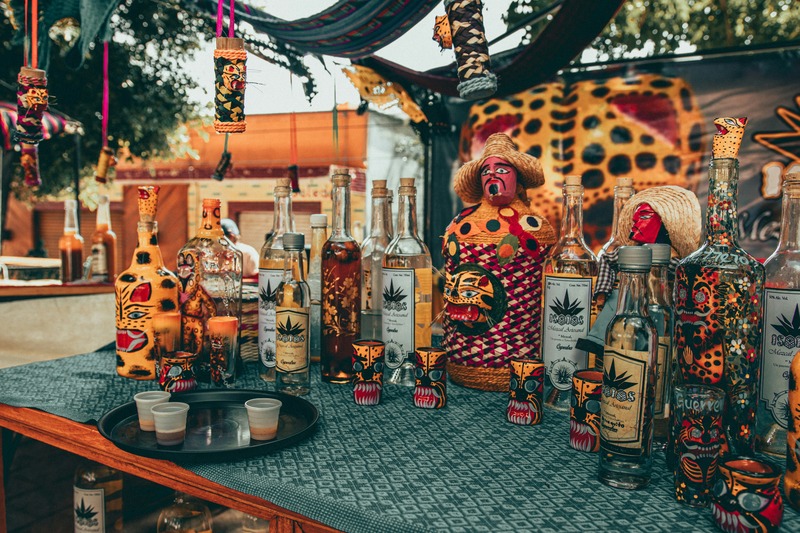
Well, some similarities are shared between Día de los Muertos and Halloween. Yet they are fundamentally different in purpose and meaning.
The similarities fall on the timing and carrying the themes of death. Both are celebrated in late October and early November, with Halloween on 31st October and Día de los Muertos on 1st and 2nd November. Death and the afterlife are cherished on both occasions. Even some symbols such as skeletons and ghosts and normally portrayed in stories and decorations.
Nevertheless, Halloween’s origins date back to ancient Celtic festivals which have evolved into a more commercial holiday in many places worldwide these days. It generally focuses on fear and the spooky aspects of death, with costumes, parties, and trick-or-treating playing major roles. On the flip of the coin, Día de los Muertos is a celebration of life and remembrance, cherishing loved ones who are no longer in this realm. It’s a holiday rooted in Mexican culture with specific rituals practised.



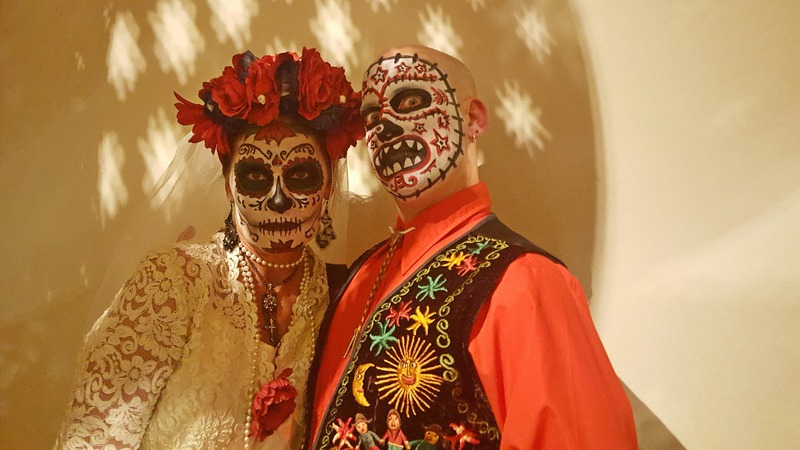
 Mirella Pandjaitan
Mirella Pandjaitan
 Oct 31, 2024
Oct 31, 2024